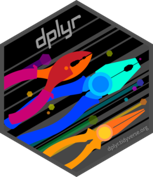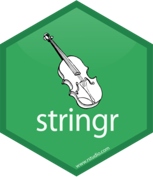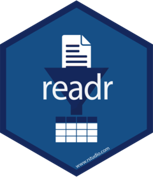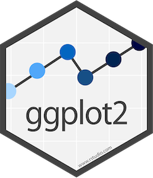This article was published as a part of the Data Science Blogathon.
Introduction
R is a popular choice for data science and statistical analysis, and many R packages are available that provide a wide range of tools and functions for working with data. We will discuss the top 11 R packages for data science beginners to learn in 2023. You’ll find that these packages are commonly used in all R projects and are an excellent option for newbies to begin their R journey.
These packages provide a range of functions, including data manipulation and wrangling, data visualization, machine learning, dynamic documentation, as well as the date and time handling. These packages are essential tools for working with data in R. This article presents these 11 libraries categorized as per the specific tasks performed using them.
Data Preprocessing Packages
dplyr

dplyr is one of the most used libraries from the tidyverse set of libraries. It is mainly used for data manipulation in R. The five most commonly used functions in dplyr are:
- mutate(): This function adds new columns to your existing dataframe
- select(): This function helps you to select specific columns from the dataframe
- filter(): This function extract a subset of information from the dataframe based on the logical conditions provided by you.
- summarise(): The summarize function prints the entire summary of your dataframe
- arrange(): The arrange function reorders your data according to the values of the selected column.
All these functions combine easily with the ‘group_by()’ function, which allows you to perform any operation “by group”.
In addition to dataframes, dplyr makes working with other computational backends accessible and efficient, such as dtplyr for large, in-memory datasets and dbplyr for handling data stored in a relational database translating code into SQL, sparklyr for huge datasets stored in Apache Spark. You can learn more about dplyr here.
stringr

stringr is used extensively in data cleaning and preparation activities. stringr provides a set of functions that makes working with strings simple. It is based on package stringi, which uses the ICU C library to offer fast, accurate implementations of basic string manipulations.
The seven main functions in stringr listed below start with ‘str_’ and take a vector of strings as the first argument:
- str_detect(): This function detects the presence of a pattern match in a string.
- str_count(): This function counts the number of matches in a string.
- str_subset(): This function returns the strings that contains a pattern match.
- str_locate(): This function gives the position of pattern matches in a string.
- str_extract(): This function extracts the first pattern match found in each string.
- str_match(): This function returns the first pattern match found in each string defined by parentheses.
- str_replace(): This function replaces the first matched pattern in each string with new text.
- str_split(): This function splits up a string into multiple pieces.
You can learn more about stringr here.
readr

The purpose of readr is to give a quick and easy way to read rectangular data from delimited files like comma-separated values (CSV) and tab-separated values (TSV). It is intended to parse several data formats while providing an informative problem report when parsing produces unexpected results.
The following file formats are supported by readr with these read_*() functions:
- read_csv(): For loading a comma-separated values (CSV) file, use the read_csv() function.
- read_tsv(): For loading a tab-separated values (TSV) file, use the read_tsv() function.
- read_delim(): The read delim() function is used to read the most popular forms of flat file data, comma-separated values, and tab-separated values, i.e., read csv() and read_tsv() functions, respectively.
- read_fwf(): For reading a fixed width file, read_fwf() function is used.
- read_table(): For reading the type of textual data where one or more columns of space separate each column, the read_table() function is used.
- read_log(): For reading web log files, read_log() function is used.
You can learn more about readr here.
Data Visualization Packages
ggplot2

ggplot2 is a data visualization package for the statistical programming language R. It was created by Hadley Wickham and implements Leland Wilkinson’s Grammar of Graphics—a general scheme for data visualization, which breaks up graphs into semantic components such as scales and layers. ggplot2 allows users to create a wide range of static, animated, and interactive graphics using a concise, consistent API. It is beneficial for visualizing complex data and creating customized graphics. ggplot2 is widely used in academia and industry and has become a staple of data visualization in R. With ggplot2; you can build almost any type of chart.
Generally, you start with the ggplot()function, supply a dataset, and aesthetic mapping within the aes()function. You can then add different layers for building different plots. To make it look beautiful, you then add different colors and use faceting specifications like facet_wrap()and many more. You can learn more about ggplot2 here.
Leaflet
It is an open-source JavaScript package mainly used to create interactive maps. Additionally, you can use these maps directly from the R console. You can design and customize your map using arbitrary combinations of Map tiles, polygons, Markers, Lines, etc. Read about the leaflet package here.
Machine Learning Package
Caret
The caret package (short for Classification And Regression Training) is a set of tools for building predictive models in R. It provides functions for preprocessing data, creating model objects, training models, evaluating model performance, and tuning model hyperparameters. The caret package is designed to streamline the model training process and allow users to easily compare and select from among a wide range of model types and tuning parameters. It supports a wide range of model types, including linear and nonlinear regression, classification, and clustering algorithms, and has a consistent interface for working with these models. The caret package is widely used for machine learning in R. You can learn more about caret here.
Dynamic Documentation Packages
knitr

The knitr package is an R package that allows users to embed R code and output in a variety of document formats, including HTML, PDF, and Microsoft Word. It is built on top of the Sweave system, which Friedrich Leisch developed to allow users to mix R code and LaTeX documents.
knitr adds a number of features to Sweave, including –
- the ability to include code and output from other languages, such as Python and SQL
- , create dynamic reports that can be updated automatically when the underlying data or code changes.
knitr is a popular choice for creating reproducible research documents.
R Markdown
The R Markdown package is an R package that allows users to create dynamic documents that combine text, code, and output in a single document. R Markdown documents are created using a simple, easy-to-learn markup language called Markdown, a variant of the popular Markdown syntax. R Markdown documents can be rendered in various formats, including HTML, PDF, and Microsoft Word. They are handy for creating reproducible research, allowing users to embed R code and output directly in the document. The R Markdown package provides a range of features for formatting and customizing R Markdown documents, including the ability to include images, tables, and other formatting elements. It is a powerful tool for creating a wide range of documents.
Data and Time Package
lubridate

The lubridate package is a set of tools for working with date and time datasets in R. It provides functions for parsing, manipulating, and formatting dates and times and for performing common operations such as finding the difference between two dates or adding a specified number of days to a date. lubridate makes it easy to work with date and time data in R by providing a consistent, intuitive interface for everyday tasks. It also supports working with time zones and automatically handles issues such as daylight saving time. lubridate is a popular choice for working with date and time data in R and is an essential package for beginners to know. You can learn more about lubridate here.
Interactive Table Package
DT
The DT package is an R package that enables the creation of interactive tables in R. It is based on the DataTables JavaScript library, which offers a fast and feature-rich interface for generating interactive tables in web browsers. The DT package allows users to create tables in R that can be sorted, filtered, and searched by users and which can be paginated for large datasets. It also provides functions for customizing the appearance and behavior of the tables, including the ability to add formatting, tooltips, and other features. The DT package is a popular choice for generating interactive tables in R and can be easily used by beginners. You can learn more about DT here.
Dashboards Package
Shiny

Shiny is a widely used package in R. Shiny helps you to share your findings with others and make it simpler for them to understand through visuals. It is simpler to create interactive web apps using Shiny.
You can create dashboards, embed standalone applications in R Markdown documents, and host them on a website. Additionally, you can add CSS themes, HTML widgets, and JavaScript actions to your Shiny apps. You can learn more about shiny here.
Conclusion
In conclusion, the 11 Popular R Packages for Beginners In 2023 mentioned in this article provide a wide range of tools and functionality for working with data in R. From data manipulation and visualization to machine learning and dynamic documentation, these packages are essential tools for any R user. Some key takeaways from this article include:
- The dplyr, stringr, and readr packages are necessary for data manipulation and wrangling.
- ggplot2 and leaflet are powerful tools for creating static, animated, and interactive graphics.
- caret is a popular choice for machine learning in R for beginners.
- knitr and R Markdown are helpful in creating dynamic research documents.
- lubridate is a powerful tool for working with date and time data in R.
- DT provides an interface for creating interactive tables in R.
- Shiny is a popular tool for creating beautiful dashboards in R.
Overall, these packages are essential tools for beginners to learn in 2023 as they provide a wide range of functionality for working with data in R.
The media shown in this article is not owned by Analytics Vidhya and is used at the Author’s discretion.





